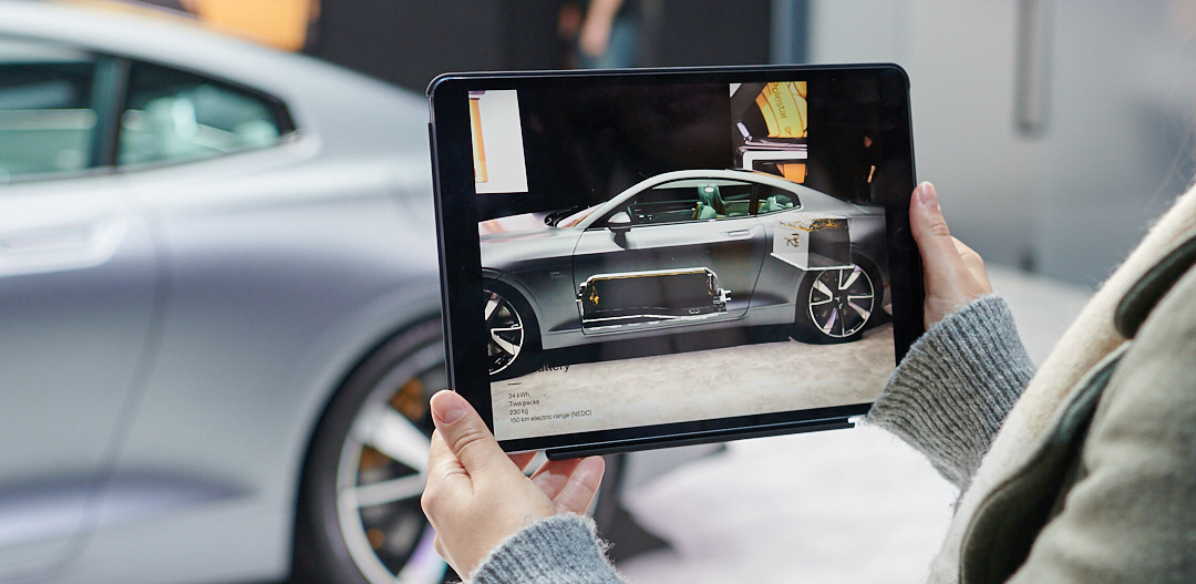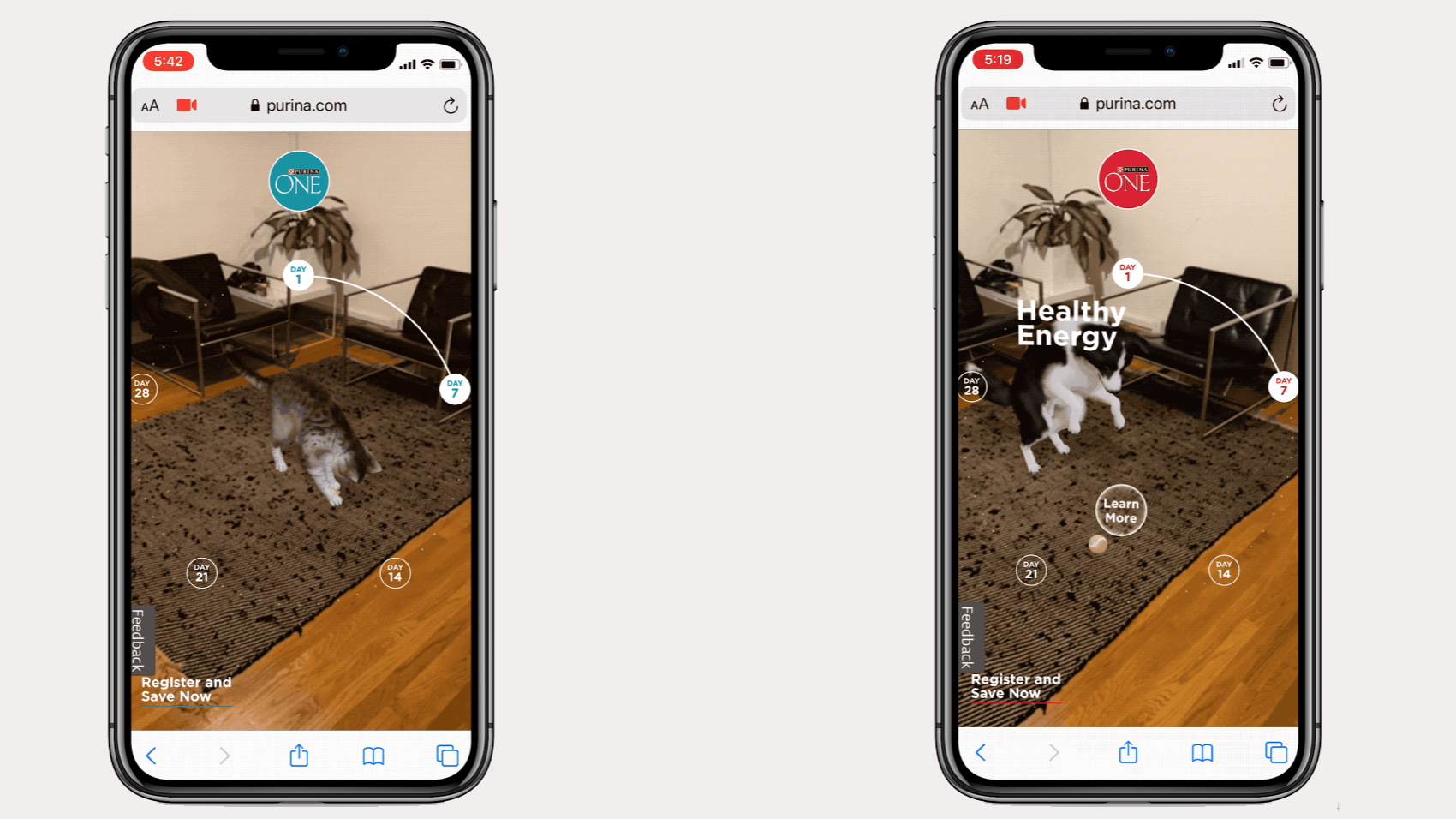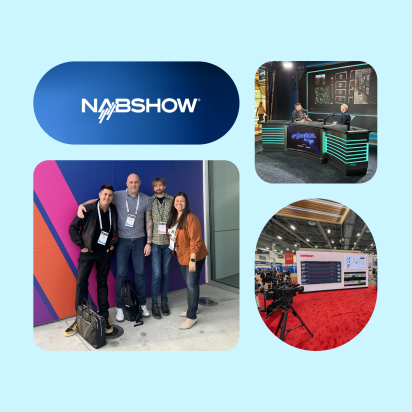Bridge the Online and Offline Shopping Experience with AR

The rate of hyperadoption in digital retail has accelerated in recent months: consumers are buying online more than ever before, and retailers selling non-essentials online saw a 65% uptick in online revenue from March 14 to April 17, according to Forbes. As consumers adapt to the necessity and convenience of discovering, researching and purchasing online, retailers must also harness this moment to bridge the online and offline shopping experiences.
Econsultancy reports that “47% percent of respondents from large enterprises say that in the past several weeks, they have observed product or service innovations at their organizations as a result of the outbreak, while 49% have observed innovation in marketing messaging or branding that they might use post-outbreak.” One such innovation that marketers are exploring is augmented reality (AR), specifically for industries in which meeting in-person was previously thought to be critical in making a purchasing decision—take luxury retailers, commercial and residential real estate, car buying and more.
AR Offers an Intuitive Digital Shopping Experience
Many consumers are already familiar with AR technology thanks to the ubiquity of AR filters in camera apps like Instagram or Facebook Camera. In fact, Facebook also offers AR-based advertisements within the newsfeed, allowing customers to “try out” products virtually—for example, testing lipstick shades using the front-facing camera.
AR technology links the convenience of shopping from home with the ability to inspect, explore and assess products on a store shelf. This offers a comfortable middle ground for consumers who want to bring the retail experience closer to home, either out of personal preference or due to a need for contactless shopping solutions.
Interacting with product makes you feel like you already own it.

Retailers are also primed to become the next big media platforms for brands to tell their stories, according to insights from the Forrester report, “Retailers: You’re The Next Media Moguls.” “Shopping is fragmented and the shopping journey isn’t linear, but consumers are nonetheless likely to discover and research high- and low-consideration products in retail stores and on retail websites,” writes Forrester VP, Principal Analyst Sucharita Kodali. “As sources of information, retailers like Amazon, Best Buy, Target, and Walmart know they are well positioned to tell brand stories to these shoppers on their and other websites.”
Big-box retailers and leading ecommerce platforms can transform the shopping experience and support the businesses they represent by offering such highly personalized digital experiences. By baking AR into its app, for example, Amazon enables brands to engage with customers while they’re already in the mindset to shop. But perhaps more important to the role that retail must play for consumers moving forward, these experiences build a personalized connection and emotional resonance.
In his talk “Extending Beyond the Horizon,” delivered to the In-House Agency Forum, MediaMonks Founder Wesley ter Haar discussed the impact that engaging with an object—physically or digitally—has on consumers. “Interacting with product in physical space makes you feel like you own it. Building that into the digital experience delivers on that user expectation for personalization that’s often missing.”
Streamline the In-Store or Showroom Experience
While the immediate benefits of AR are clear to at-home shoppers, the technology can enhance and streamline the brick-and-mortar retail experience as well. Examples include wayfinding toward specific products via a mobile camera or offering AR directories that may make it easier to find specific stores and departments. AR product demonstrations like those mentioned above serve a purpose in-store, too, offering a high-tech alternative to display products or expert-led demos, enabling an overall contactless shopping experience.
What do you want people to unlock when consumers scan something?

In this respect, retailers should approach AR with a sense of purpose, ensuring the space embraces a “camera-ready” approach. “Is your packaging ready for cameras, is your retail space ready for cameras?” asks ter Haar. “In building an overall AR infrastructure, consider: What do I want people to unlock when they scan something?”
Supporting these technologies also establishes a long-term strategy for real estate businesses to activate spaces and build a sense of placemaking for their retail tenants. Similarly, 3D content offers an engaging way for these businesses to entice new tenants: for example, offering an AR overlay that virtually furnishes the space, adds data visualizations or lets users see the effect that time of day has on lighting. In response to social distancing, for example, venues are building digital twins that let online users truly inhabit spaces digitally. Such features would also prove useful to both retail and residential real estate.
Focus on Simplicity and Efficiency in Building AR Experiences
For brands that are experimenting with AR for the first time—either as one-off campaigns or as a sustained feature in an ecommerce platform—it’s important to keep things simple. The most complex and feature-rich AR experiences require users to download and install a brand app, which many users may be unwilling to do. “One aspect that’s very critical is how seamlessly you can enter an AR experience,” says Marie-Céline Merret Wirström, Executive Producer at MediaMonks. “Downloading an app is a huge barrier of entry.” Instead, retailers may consider web-based AR experiences that plug in directly with an existing ecommerce platform with just a simple tap.
Social AR experiences, like those you can find on Snapchat, Instagram and Facebook Messenger, offer a simple way for brands and retailers to experiment with AR. “AR is really powerful in the funnel,” says ter Haar. “Lenses are often thought of just as something that is entertaining but a throwaway experience, buy you can build really impactful functionalities by connecting AR with platforms like Facebook Messenger.”
Web-based AR is another simple platform to get started on, with an added benefit: users can jump seamlessly into the experience through their web browser. It’s also a very easy platform for brands to develop for. “If you are, say, a luxury brand and have a product that people will want to examine for size and detail, you should be using WebAR,” says ter Haar. “It’s very easy to implement because you just need the 3D format, the model of the product.”
Merret Wirström notes that even the most simplistic AR experiences can be effective for driving digital engagement. “Being able to see a product in 3D in high resolution is all you need, and from there you can expand to include specific features or variations in product,” she says. “That’s just a bare minimum approach, but it’s already so much more effective than looking at a flat image or reading product specifications.”
The Purina One: 28 Day Challenge serves as a good example of how a simple web-based AR experience can inform users while also building an emotional connection. Once activated, users simulate feeding a pet dog or cat that appears within the space they’re in. As the pet eats the Purina blend, the web app highlights signs to look for (and when) to determine improvements in health.

As a means to become more equipped to offer AR experiences, ter Haar suggests that brands elevate the role of 3D content in the marketing mix. “Try to make the AR or 3D element part of your production workflow,” he says. “One of the biggest challenges we run into with AR is that brands don’t have the assets available.”
Volvo’s Polestar 1 Experience, developed for the Geneva Motor Show in 2018, offers a high-end product demonstration by overlaying the Volvo Polestar with AR assets that showcase internal features. While this showroom experience is much more complex than what a retailer might offer at home, it provides an example of how AR can uniquely demystify product attributes through intuitive, customer-led exploration using CAD assets.
Augmented reality remains an efficient and effective way for retailers and real estate businesses to, well, augment the digital experience by building personalized impact. By integrating AR features natively into an ecommerce platform or even in a store, businesses can bridge the gap between online and offline shopping, providing a middle ground that accommodates the shifting needs of consumers.
Related
Thinking
Sharpen your edge in a world that won't wait
Sign up to get email updates with actionable insights, cutting-edge research and proven strategies.
Monks needs the contact information you provide to us to contact you about our products and services. You may unsubscribe from these communications at any time. For information on how to unsubscribe, as well as our privacy practices and commitment to protecting your privacy, please review our Privacy Policy.



